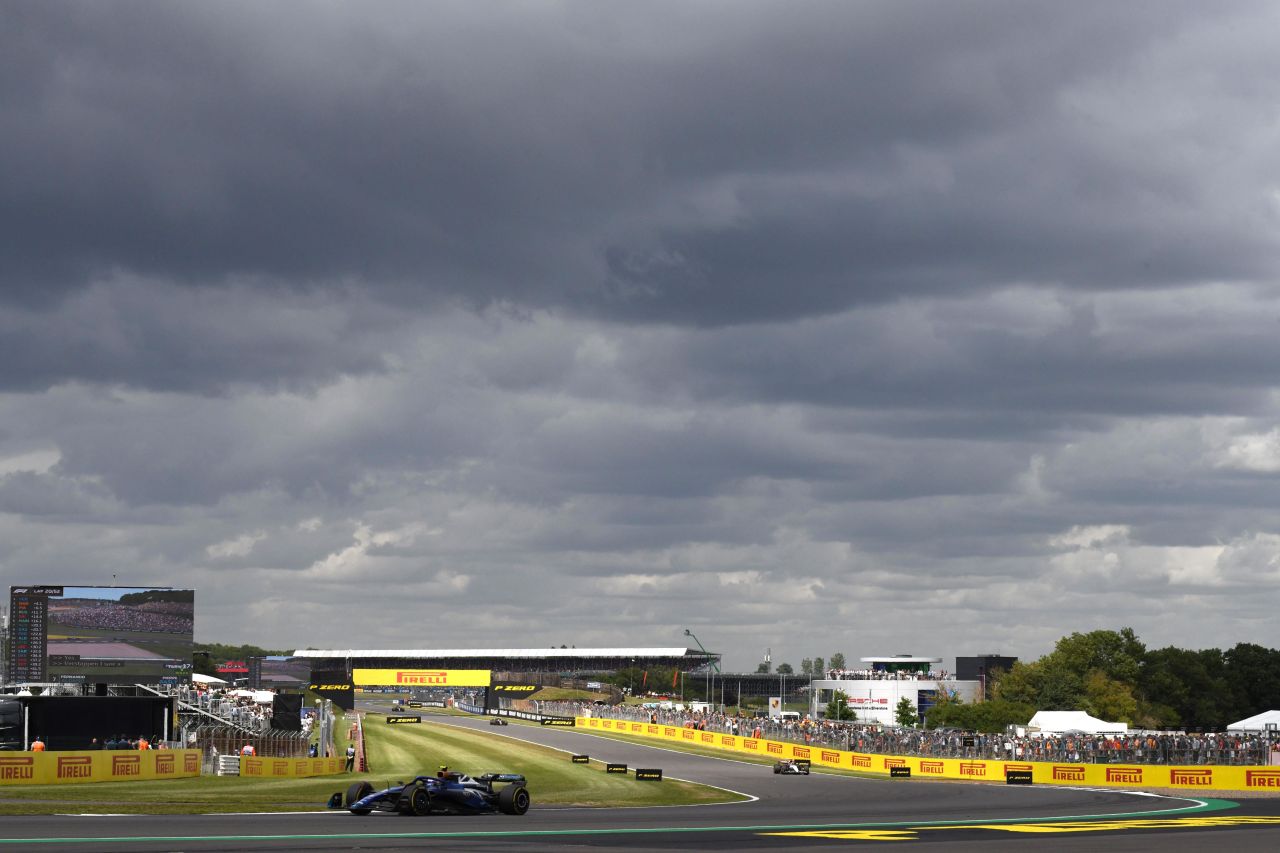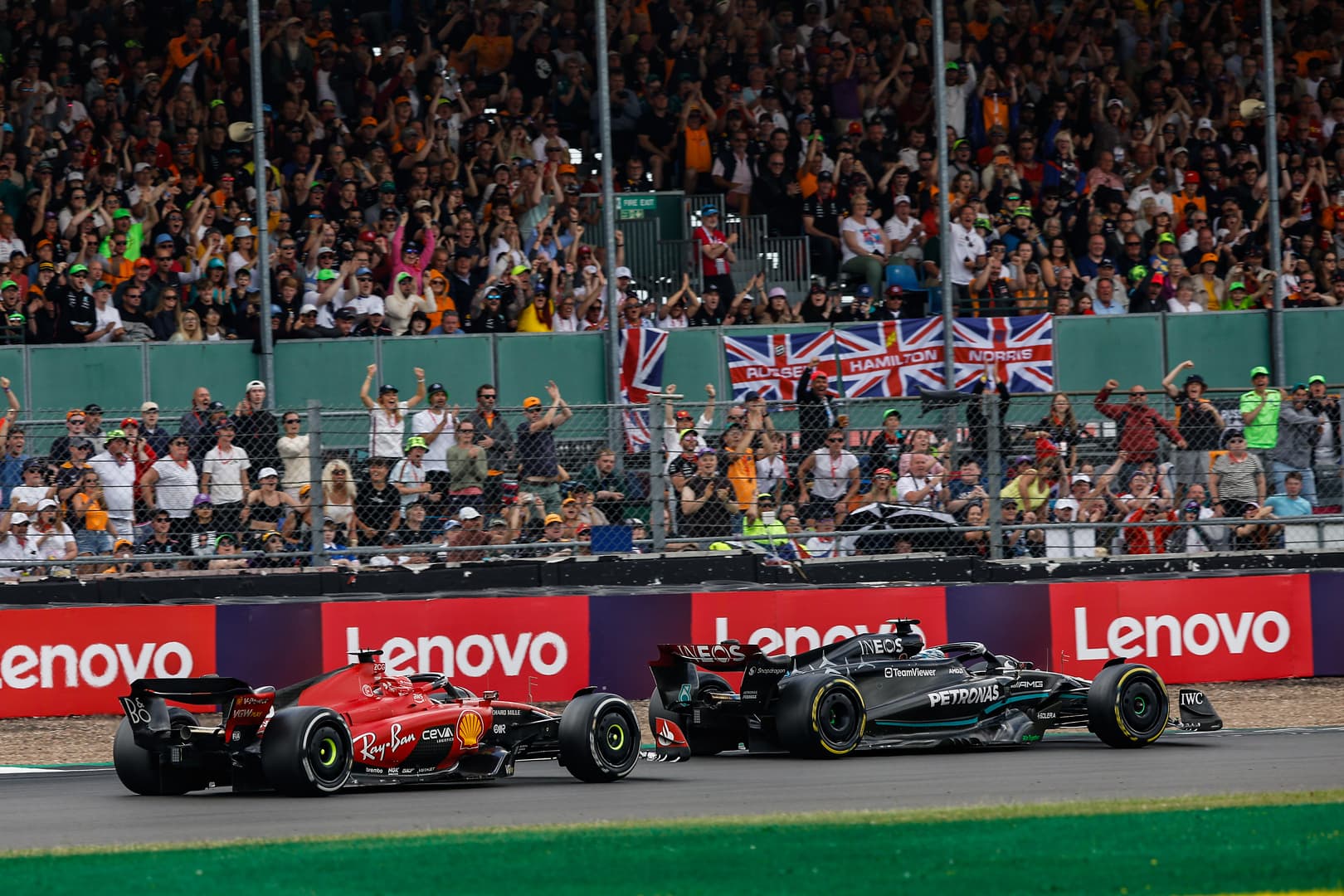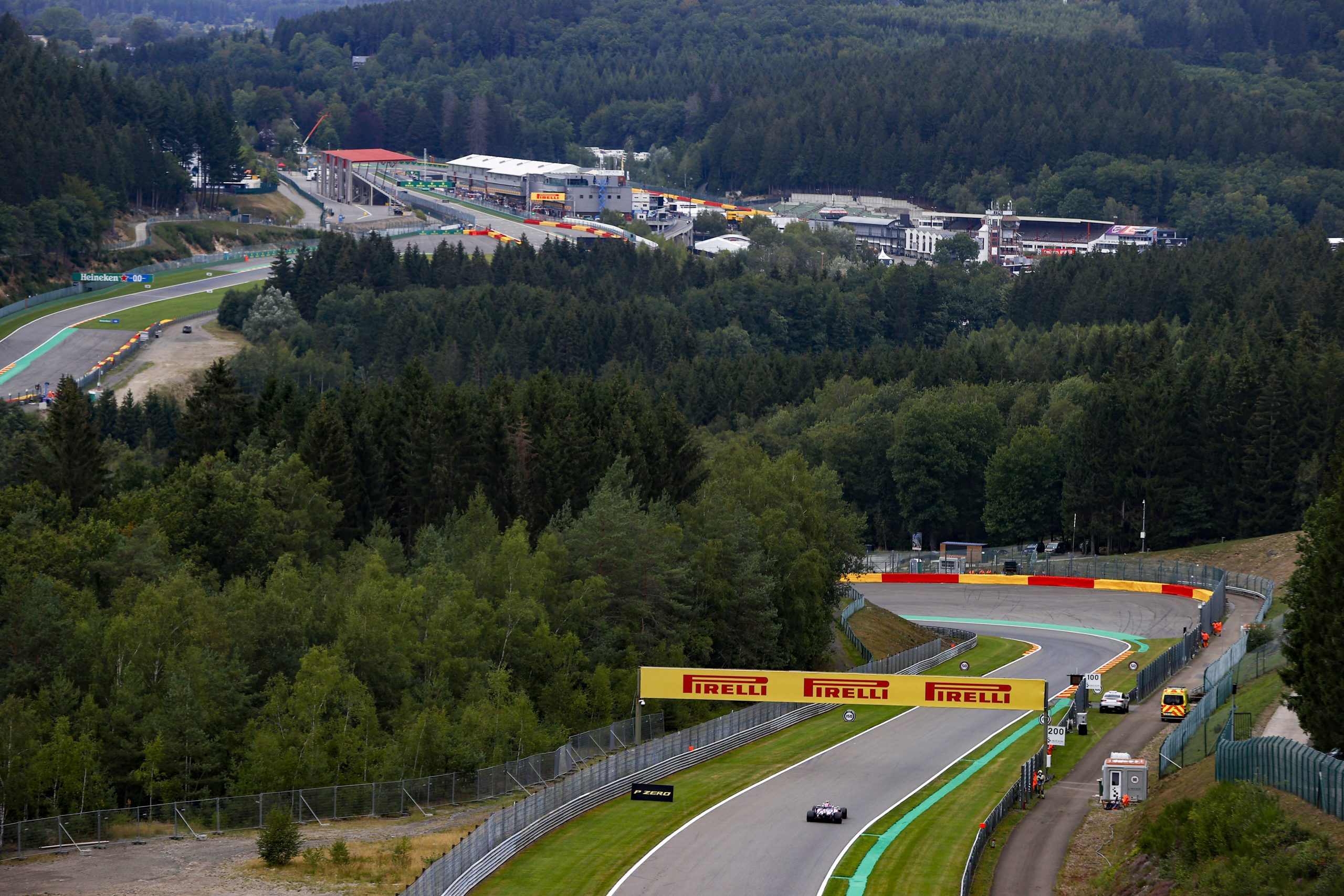Silverstone Circuit
Silverstone Circuit is a prominent motor racing circuit located in England, near the villages of Towcester, Silverstone, and Whittlebury in Northamptonshire. Renowned for being the current home of the British Grand Prix, a prestigious event that it has hosted on numerous occasions since the circuit’s inception, Silverstone boasts a deep-rooted history that intertwines with the evolution of Formula 1 racing. The circuit witnessed the birth of the World Championship of Drivers in 1950, making it a cornerstone in the world of motorsport.
The origins of the circuit can be traced back to World War II, where it served as an RAF Bomber Station known as RAF Silverstone. Post-war, its transition into a racing circuit retained the airfield’s characteristic triangular layout, which has since been modified and upgraded to meet modern racing standards. Silverstone is celebrated not just for its historical significance but also for the thrilling race experiences it continues to offer, shaping itself as a key destination for motorsport fans and drivers alike.
Today, Silverstone is synonymous with high-speed competition, featuring a blend of challenging turns and fast straights that test the limits of racing technology and driver skill. The circuit’s design promotes overtaking and competitive racing, elements that contribute to the exhilarating spectacles during events like the British Grand Prix and MotoGP. Silverstone remains an integral part of Britain’s motorsport legacy and continues to attract global attention from fans and participants year after year.

History of Silverstone Circuit
Early Years
Silverstone Circuit began as RAF Silverstone, a World War II airfield, before transitioning into an iconic racing track in Northamptonshire, United Kingdom. In 1948, the Royal Automobile Club took a lease on the property, transforming it into a race circuit. Their lease signified the circuit’s official inception into motorsports with the perimeter track serving as the mainstay for races. The initial layout featured long straights from the airfield’s runways flanked by sharp hairpin bends.
The Birth of British Grand Prix
It wasn’t until October 2, 1948, that Silverstone held the very first British Grand Prix, marking a pivotal point in its history. A crowd of an estimated 100,000 spectators witnessed what was to become a cornerstone event in British motorsport. This event set a precedent, and Silverstone became one of the rotating hosts for the subsequent British Grands Prix.
Racing Evolution
In 1950, Silverstone wrote a significant chapter in global racing by hosting the inaugural race of the newly established World Championship of Drivers. The track continued to evolve, with the start line for Grand Prix races being moved in 1952 to the straight that connects Woodcote and Copse corners. Throughout the 1970s and 1980s, the circuit underwent various alterations to increase driver safety and technical difficulty.
Modern Upgrades
By the late 20th century, Silverstone had cemented its status as the permanent venue for the British Grand Prix, reflecting its importance in the racing community. The track has seen continual development including major redesigns to adapt to the evolving standards of Formula One and to enhance the safety for riders and drivers alike. These numerous upgrades over the years affirm its standing as a premier racing circuit known for fostering fierce competition and engineering triumphs.
Today, Silverstone is an FIA Grade 1 circuit that hosts a variety of motorsport events, including Formula One’s British Grand Prix and the British round of the MotoGP series, celebrating its storied past and embracing its dynamic future.
Silverstone Circuit Corner Names
The Silverstone Circuit, steeped in motorsport history, features turns each with its own story and connection to local landmarks, historical events, or geographical features.
Becketts and Maggotts
The Becketts complex, consisting of an intricate sequence of corners, is named after a local landmark, the medieval chapel of St Thomas à Beckett. Approaching Becketts, drivers first navigate through Maggotts curve, which is not named after larvae as one might assume, but rather after a nearby area known as Maggot Moor. This sequence is renowned for its high-speed challenges and requires precise vehicle control.
Abbey and Farm Curve
The circuit starts with Abbey corner, named as a homage to the old Luffield Abbey ruins discovered near the site. Followed by Farm Curve, this gentle left-hander is a nod to its pastoral past, where the track once ran near farmland.
Hangar Straight
Named after its aviation past, Hangar Straight has a direct link to Silverstone’s use as a RAF base, with several large hangars originally located adjacent to this part of what is now the circuit. Cars reach considerable speeds here, echoing the lightning-fast takeoffs that planes once performed on this very stretch.
Woodcote and Copse
Woodcote corner is named after the RAC’s Woodcote Park, reflecting the influence the club had in the early racing activities at Silverstone. Copse corner, with its proximity to small wooded areas known as copses, is characterized by its high speed and the close attention it demands from drivers due to the presence of Chapel Copse and Cheese Copse nearby.
Luffield and Brooklands
Luffield corner, named after the same historical landmark as Abbey, was once two separate turns and is known for its long, challenging right curve. Brooklands turn pays homage to the UK’s Brooklands track, which was a precursor to Silverstone as a top British motor racing venue.

Major Events at Silverstone
Silverstone Circuit in the UK is a hub for international motorsport events, headlined by the Formula 1 British Grand Prix. The track also hosts the thrilling MotoGP, a slew of support races, and various special events each year that underline its rich motorsport heritage.
Formula 1 British Grand Prix
Historically, Silverstone is synonymous with the Formula 1 British Grand Prix; a pivotal round in the F1 calendar. The event has seen remarkable wins, such as Nigel Mansell’s victory in 1987 and Lewis Hamilton’s record-equaling win in 2020. This circuit is often referred to as the ‘Home of British Motor Racing’ and contributes significantly to Formula 1’s storied legacy.
MotoGP
Apart from Formula 1, Silverstone is a key venue for motorcycle racing, hosting the MotoGP. This event brings together the world’s top motorcycle racers and manufacturers, showcasing high-speed competition and advanced engineering in the realm of two-wheeled motorsport.
Support Races
During major race weekends, like the Formula 1 British Grand Prix, Silverstone features various support races. These races can include categories like Formula 2, Formula 3, and the Porsche Supercup. They provide an opportunity for emerging talent to shine on a prestigious stage and offer a non-stop racing spectacle for fans.
Special Events
Throughout the year, Silverstone organizes special events that cater to a wide array of motor racing enthusiasts. Notable among these is Run Silverstone, which transforms the circuit into a racetrack for runners, offering distances like 5k, 10k, and a half marathon. These events often celebrate both the history and the diversity of activities that can be enjoyed at this iconic circuit.
Technical Specifications
Silverstone Circuit is known for its challenging configuration and is a favorite amongst racing enthusiasts. Harnessing a mix of high-speed corners and technical sections, it tests the precision and skill of drivers, making technical specifications paramount.
Lap Records
At Silverstone Circuit, the Formula 1 lap record is held by Lewis Hamilton, set at 1 minute 24 seconds 303 milliseconds. This record underscores the circuit’s demand for speed and agility. Meanwhile, Max Verstappen holds the fastest race lap record, achieved during the 2020 race with a time of 1:27.097.
- Formula 1 Lap Record: Lewis Hamilton – 1:24.303
- Fastest Race Lap: Max Verstappen – 1:27.097
Race Distance
For Formula 1 events, Silverstone’s Grand Prix layout stretches over 18 demanding turns, spanning 5.891 kilometers per lap. The race distance is determined by the number of laps, typically 52, summing up to approximately 306.198 kilometers overall.
- Circuit Length per Lap: 5.891 km
- Total Race Laps: 52
- Total Race Distance: ~306.198 km

Sustainability and Environment
Silverstone Circuit has aligned its operations with rigorous environmental management systems and sustainable practices, impacting local biodiversity and incorporating green initiatives.
Local Wildlife
The sustainability efforts at Silverstone Circuit extend to conserving local biodiversity. They have incorporated measures to protect local wildlife habitats, including specific initiatives for the well-being of indigenous sheep populations, ensuring that the circuit’s operations harmonize with the needs of the natural fauna.
Green Initiatives
Silverstone’s Green Initiatives are comprehensive:
- Achieved certification to the ISO 14001 environmental management standard.
- Committed to reduce carbon emissions as a part of their broader sustainability goals.
- 100% green electricity powers the entire circuit’s operations.
- Measures to reduce plastic reliance have been put into place, enhancing the circuit’s eco-friendliness.
Silverstone Circuit – Frequently Asked Questions
The following section provides direct answers to common inquiries about Silverstone Circuit.
Why is Silverstone so popular?
Silverstone is renowned for its rich motorsport history and is considered a cornerstone in Formula One racing. It has been the permanent home to the British Grand Prix since 1950 and offers a blend of high-speed corners and technical sections that challenge both drivers and teams.
How long is Silverstone from London?
Silverstone Circuit is approximately 90 miles from London. Depending on traffic, the journey by car can take around 1.5 to 2 hours, but allow much longer on race weekends as traffic jams occur regularly.
Is Silverstone a fast circuit?
Yes, Silverstone is characterized as a fast circuit. It features long straights and quick corners, such as the Maggotts-Becketts-Chapel complex, allowing for high-speed racing and overtaking opportunities.
Is Silverstone a difficult track?
Silverstone is known for its complexity and technical challenges. It demands precision and skill from drivers, with a mix of high-speed sections and tight corners that test a driver’s ability to maintain speed without compromising on control.
Where can I buy British Grand Prix tickets?
Tickets for the British Grand Prix at Silverstone can be purchased through the official Silverstone website or authorized ticketing partners. It is advisable to book in advance due to high demand.

